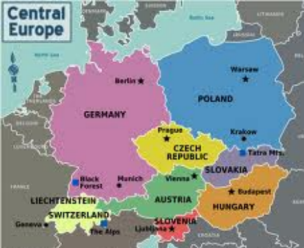
Editor's Note: The following piece was written by HRW-Hydro Review Worldwide chief editor David Appleyard, who is currently attending the Renewable Energy World Conference & Exhibition. REW Europe is being held this week in Vienna, which has been affected by the recent floods in central Europe.
Flooding in central Europe has pushed hydropower development and its role in managing water flows to the top of the political agenda this week. With multiple deaths reported, the Danube, the Elbe and other major rivers in the region have seen Austria, Germany and the Czech Republic all affected by rising water levels. Thousands of people have been evacuated in the Czech Republic where a state of emergency has been declared and Germany’s Chancellor Angela Merkel has promised EUR100 million to support flood affected areas.
Floodgates on a system of nine dams called the Vltava Cascade in the Czech Republic were opened on Monday in a bid to stop flood defences failing in Prague. The projects in this system include the 120 MW Lipno 1, the 364 MW Orlik plant and the 144 MW Slapy project.
The capacity of these Vltava Cascade power stations represents more than 17 % of the total installed capacity of utility group ČEZ, a. s.
The role of hydropower in flood projection and generation has also been highlighted this week at the Renewable Energy World Europe event with a technical tour to the Gabčíkovo waterworks system in Slovakia.
Owned and operated by Enel subsidiary group Slovenské Elektrárne a.s., Gabčíkovo was originally conceived as a development within the Waterworks System Gabčíkovo-Nagymaros as a common investment between Czechoslovakia and Hungary. However, after withdrawal of Hungary from the project in 1989, only the Gabčíkovo part has been completed and serves in multiple roles, including flood protection on the Danube from Bratislava to Štúrovo in Slovakia, transportation services and electricity generation, among others.
The Gabčíkovo waterworks consists of the Čuňovo stage with an inlet channel and the Gabčíkovo stage with an exit channel. On the Čunovo stage there are a number of small hydro power plants, the 24.4 MW Čunovo with four horizontal PIT Kaplan turbines and HPP Mošoň with an installed capacity of 1.04 MW from two Kaplan slope turbines.
On the Gabčíkovo stage there is the 720 MW Hydro Power Plant Gabčíkovo with its eight vertical Kaplan turbines with runner diameters of 9.3 metres. There is also the small HPP S7 Gabčíkovo with the installed capacity of 1.2 MW from two horizontal Francis turbines and two navigation lock chambers of 34 x 275 metres.
Depending on the flow of the Danube Gabčíkovo generation varies between 1.8 to 2.8 TWh annually and represents 10%-12% of the total Slovakian electricity consumption with a typical flow rate of some 630 m3/s through each of the turbines. The final machine was installed and commissioned in 1992.
Slovenské Elektrárne is the biggest electricity provider in Slovakia with 82% of the country’s generation market. The company owns and operates 34 hydropower plants with a combined capacity of 1652.7 MW.
Here in Vienna the Danube has a typical flow rate of some 2000 m3/s but is currently estimated at 10,000 – 11,000 m3/s with levels peaking Wednesday afternoon and Thursday morning. The maximum flood management capacity is some 14,000 m3.
Aside from flooding and impacts to the power systems of the region, shipping has been suspended on the Danube in Austria, affecting the transport of bulk commodities such as grain and coal.
Copyright © 2013: PennWell Corporation Subscribe to: http://www.hydroworld.com
http://www.hydroworld.com/articles/2013/06/flooding-continues-in-central-europe.html